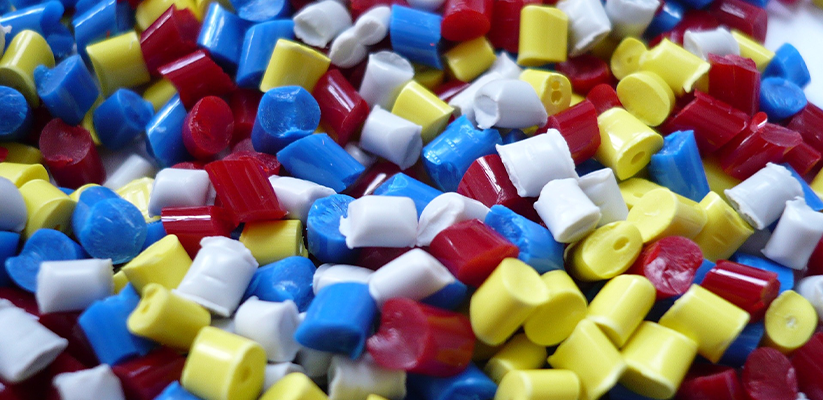
Plastics Between Challenge and Opportunity
K 2019, which took place end of October this year in Dusseldorf, is a gigantic trade fair for the plastics industry. If you were a data anthropologist, you would not merely visit to smell the chemicals and witness the latest innovations in the plastics industry, you’d visit to be one of the few voices talking about AI and the ways it could impact an industry that faces both tremendous opportunities and challenges.
The movement towards prohibiting single-use plastic is growing. Now, 18 percent of plastic is recycled globally, up from nearly zero in 1980. Promoting sustainability in a circular economy across the industry in an environment characterized by increasing climate change was indeed a main theme for this year’s fair.
One of the earliest applications of plastics was reducing the use of elephant ivory, saving this creature from extinction, and many other subsequent plastics applications have transformed our lives. However, the increase – and uncontrollable production of – more than 448 million tons of plastic yearly, of which 40 percent is disposable, has resulted in catastrophic consequences to our environment and humanity.
AI Impacts Polymers, and Polymers Impact AI
This does not raise the flag for the demise of this useful material. According to the Tokyo Institute of Technology Research, polymers will be a cornerstone to single-molecule electronic devices. This will set the stage for smaller, more portable, yet more compute-capable AI devices that also use less energy.
While polymers will be a big part of shaping the future of AI, edge computing will also play a key role in moving the industry towards circular economy and sustainability.
Building Smart Factories for the future of Polymer
Much has changed from the first known mass-production center in ancient Rome to the smart, miniaturized, adaptive, and rapidly responding factories of today. Here are 5 pillars that will shape the future factories of a sustainable plastics industry:
- Collaborative Data Sharing: Future plastics factories should be able to collaborate and share data in a secure manner. Individuals should be able to securely exchange equipment failure data with manufacturers or third parties. Also, the data would need to be combined across spare-part databases, recycling prices, and the product reuse marketplace. An example would be a machine-learning-based fault diagnostics model for plastic injection molding that is trained on shared process data across work systems. Technologies like data virtualization and federated learning would play a key role in making this possible.
- Resource Sharing: Factories of the future will have a short product life cycle and orchestrate the intelligent resource allocation of machines so that each device could collaborate and contribute in provisioning latency-sensitive services, thus being able to respond to personalized, customized, connected, and inexpensive products and experiences. This would all possible with edge computing and 5G.
- Personality Robots: Robots in smart factories will have different personality types, to respond to diverse challenges. We might have bold robots to meet physical threats and shyer robots that would be able to perform tasks like machine maintenance and care.
- Dynamic task distribution: Personalizing services through dynamic task distribution, in this context, requires a technology that achieves ultra-low latency at the level of the local machines that distribute the production tasks based on each machine’s individual energy consumption. This requires an MEC platform equipped with data virtualization that can access all data sources across all of the different tiers.
- Context Awareness: Future factories will be able to understand context. So, swarms of robots, functioning autonomously, will have the capability to switch power consumption mode, depending on environmental conditions such as ambient temperature.
Each of these pillars will play a key role in offering customers options to not only repair their products as needed but also to resell, refurbish, or recycle them with help from a collaborative data-sharing platform. All other pillars will help in shaping a sustainable factory production. This is just the first step in the journey of making plastics an environmentally friendly material that can shape the future of AI, and thus, our lives.
- If Trust is the Main Ingredient of Leadership, Is Trust the Main Ingredient of Successful AI? - November 18, 2020
- The Main Pillars of Future Polymer Factories, the Next Future Material for AI - November 15, 2019
- From the Bronze Age to Today’s AI-based Circular Economy, and How Data Virtualization and Federated Learning Make It Possible - August 13, 2019

First of all I am very thankful to you. It is very glad to read the article. This article helps the people to gain their knowledge in the specific field.
I would like to share some details where it helps the people to gain knowledge
https://polymer-materials.materialsconferences.com/
First of all, we are very thankful for your article. It is very happy to share the feelings that your article is very helpful to people to gain knowledge in the field of Chemistry. We suggest you go through our article where it also helps you as well as others.
This is a great addition tips blog, thank you for sharing this article. I love it how you have written the insightful, all these the main pillars of future polymer factories, the next future materials for AI. I hope you keep update us with such great tips and information in future too.